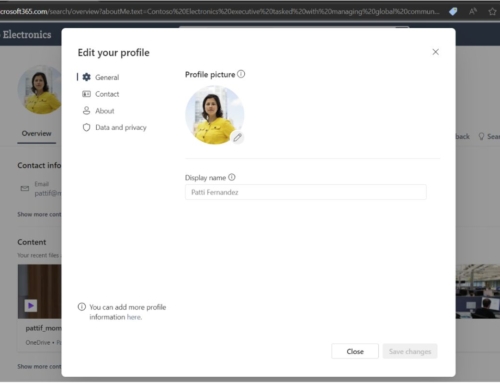Inclusive Web Design
Inclusivity has become an increasingly popular concept– spanning everything from business practices, to political policies, and digital design. And as the world continues its move towards digitalization, inclusive web design is likewise becoming an important business practice. It is important to note that in some cases websites may be considered by law to be “places of public accommodation” and thus an organization may be required to ensure site visitors have an accessible and inclusive experience.
What is Inclusive Web Design?
Inclusive web design is a UX methodology where designers consider the environment and circumstances of diverse user groups and demographics to ensure content is accessible to everyone rather than to a narrow set of users. Inclusive design removes bias and assumptions from a website so that users won’t feel excluded due to an impairment, demographics, or other temporary or permanent circumstances, and makes sure that all users feel safe and included on any page of a website, whether it be the login screen, the home page, or the search bar.
A method popular with designers is to create fictional personas at the beginning of the website project. This helps the designer visualize and relate to the end user for whom the website is being built. It can help you understand how a particular user would engage with your website.
Typical fictional user personas include the following attributes:
- Name
- Demographics (Such as age, gender, occupation, etc.)
- Personality
- Voice
- Goals
- Motivations
- Frustrations
- Fears
- Economic situations
The user personas also need to include:
Principles of Inclusive Web Design
For inclusive design to work, web designers must be guided by the following principles:
1. Flexibility
Because there is no “one size fits all” solution in inclusive web design, make sure you provide options by building for different outcomes. Thinking of who, how, why, what, where, and when people will be using your website will help in this regard.
For example, it’s a good idea to include a transcript of a video below the embedded file. That way, users who can’t or don’t want to hear or watch the video can read the text.
2. Simple and Intuitive
This is where you exercise restraint. It’s not simply a case of “less is more”; it’s a case of “less is more when more isn’t appropriate”. You need to ensure that with every feature you’re adding value and not complexity. People don’t want to have to work out how to use your website. Paragraphs should be kept short, and vocabulary should be no more complicated than needed. Eliminate ambiguity wherever possible. Your exact meaning should always be clear, and the functions of links on your site should be exactly labeled.
3. Consistency
Having a consistent, cohesive web design not only helps enhance your branding but also creates less confusion among your website visitors. For example, displaying the same element or feature presented in different ways on the same website can cause confusion. In addition, consistency with how most of the web handles core elements — like the website navigation — can improve the usability of a website and speed up time to conversion.
In addition, ensure that accessibility features, such as color contrast and alt text, are consistent across every area of your website.
4. Perception
You need to consider the perspective of your site visitors when they land on any page. A specific design or element you perceive as relevant may not actually be important to your site visitor. Some people read to understand, others are more visual learners, others need to contextualize, while others utilize a combination of all three. Design your website with a healthy mix of text and imagery. Websites that contain mostly imagery might be difficult for users who aren’t visual learners to consume the content, and websites that are mostly text might be challenging for comprehension.
5. Equity
In the context of inclusivity in web design, equity refers to how easily you can generate equal results for all users — regardless of the diversity of their backgrounds — when they interact with your website. Equity in web design means your website will give the same user experience to every individual.
A good way to address this while developing your website is by asking real users to participate early in the research and testing phases. You can also get in touch with disability charities that can help you connect with real users.
6. Prevention
Most websites include some form of interaction, whether it’s simple tasks such as clicking a link or completing a contact form, or more complex processes, such as buying a product or registering with a website. Handling these processes well is crucial. When people start interacting with your site, you need to equip them with the right information upfront to prevent them from making errors.
The main purpose of being preventative is to minimize errors, but the wider objective is to earn the users’ trust. When people feel supported, are treated respectfully, and are not made to feel stupid when interacting with your website, the trust built up reflects on your brand. For example, entering data into forms should be accompanied by clear error messages that guide users (as opposed to red fonts, which may not be perceptible to some users).
7. Accommodation
Just as you would need to ensure accommodation in a brick-and-mortar store so that any customer can enter, browse, and purchase without difficulty, your website needs to be accommodating to site visitors too. This means using spaces on web pages intelligently, in a way that makes people want to interact with your website. For example, packing a page with content and features makes a site look crowded, and ultimately, inconvenient to use. Too much space and not enough content can lead to users questioning whether the site has loaded correctly.
Comfort can mean many things to many people — ample space, predictable layouts, etc. Inclusive design also asks designers to consider how comfortable their users will be with the website’s content.
What about the Intranet?
Inclusive web design is about considering the different abilities and different situations that different users could find themselves in. Implementing the above principles and best practices falls in line with making full access to the web a basic right.
Today’s corporate intranets are an important and critical part of the web for communicating and connecting internally with all employees. It is logical that inclusive web design should also be applied internally to ensure all employees, regardless of the attributes described above, are well served, and can easily and conveniently take advantage of the myriad of resources available on your intranet. Implementing inclusive design on your intranet builds trust and loyalty and results in happier employees that understand the organization is thinking about their needs and including them in all the company has to offer.
Next steps
Is your intranet inclusive? Help is just an email away – please reach out to us at any time for a free, no-commitment consultation.
Compass365, a Microsoft Gold Partner, delivers SharePoint, Microsoft Teams, and Power Platform solutions that help IT, and Business leaders improve the way their organizations operate and how their employees work.
Explore the other posts in the Evolving Intranet series
Subscribe
Join over 5,000 business and IT professionals who receive our monthly newsletter with the latest Microsoft 365 tips, news, and updates.









